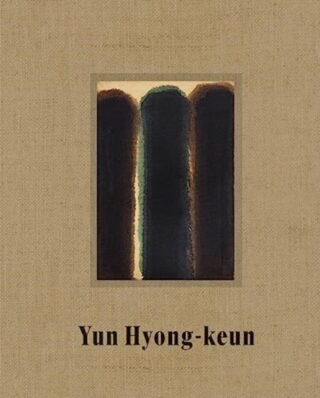0.0 z 5 hvězdiček
pevná vazbaKniha ( pevná vazba )
- Produkt je nedostupný.
A contemplative exploration of the work of Yun Hyong-keun, a renowned Korean abstract painter, during a transformative period in the early 1980s. 'His brushstrokes bled naturally across the linen or cotton raw canvas -appearing light brown as its fabric was not bleached - reminiscent of traditional East Asian calligraphy or ink and wash… Přejít na celý popis
 Užijte si Loutkáře, Bridgertonovi a další vybrané audioknihy se slevou až 40 %.
Více informací
Užijte si Loutkáře, Bridgertonovi a další vybrané audioknihy se slevou až 40 %.
Více informací
K tomuto produktu zákazníci kupují
-
 Literary Landscapes Paris
Literary Landscapes Paris
-
 Henri Cartier-Bresson: Paris Revisited
Henri Cartier-Bresson: Paris Revisited
-
 The World of Mucha: A Journey to Two Fairylands: Paris and Czech
The World of Mucha: A Journey to Two Fairylands: Paris and Czech
-
 A Series of Glances
A Series of Glances
-
 Abstract Art
Abstract Art
-
 Colour and Culture
Colour and Culture
-
 Leonardo. The Complete Paintings and Drawings
Leonardo. The Complete Paintings and Drawings
-
 Surrealists in New York
Surrealists in New York
-
 Julian Schnabel
Julian Schnabel
-
 France 1900. A Portrait in Color
France 1900. A Portrait in Color
-
 The Art Book
The Art Book
-
 Story of Art
Story of Art
-
 Protest Art
Protest Art
-
 Matthew Wong - Vincent van Gogh
Matthew Wong - Vincent van Gogh
-
 Jean-Michel Basquiat: Of Symbols and Signs
Jean-Michel Basquiat: Of Symbols and Signs
-
 Dalí (World of Art)
Dalí (World of Art)
-
 Artful Home
Artful Home
-
 New Surrealism
New Surrealism
-
 The Art of Pin-up. 40th Ed.
The Art of Pin-up. 40th Ed.
-
 David Hockney. My Window
David Hockney. My Window
-
 Van Gogh - The Complete Paintings
Van Gogh - The Complete Paintings
-
 Walt Disney's Mickey Mouse. The Ultimate History
Walt Disney's Mickey Mouse. The Ultimate History
-
 Ways of Drawing: Artists’ Perspectives and Practices
Ways of Drawing: Artists’ Perspectives and Practices
-
 Modern Architecture A-Z
Modern Architecture A-Z
A contemplative exploration of the work of Yun Hyong-keun, a renowned Korean abstract painter, during a transformative period in the early 1980s. 'His brushstrokes bled naturally across the linen or cotton raw canvas -appearing light brown as its fabric was not bleached - reminiscent of traditional East Asian calligraphy or ink and wash paintings.' The Korea Times From 1980 to 1982, Yun Hyong-keun resided in Paris, seeking both peace from the violent political turmoil that exploded in South Korea and a new, artistic center in which to create work. His brief but illuminating stay in the city became the locus of his freedom of expression, which had been subject to political repression he had experienced in his home country.
Yun's signature abstract compositions engage and transcend Eastern and Western art movements and visual traditions, establishing him as one of the most significant Korean artists of the twentieth century. He is the most prominent figure associated with the Dansaekhwa (monochrome painting) movement, the name given to a group of influential Korean artists from the 1960s and 1970s. Using a restricted palette of ultramarine and umber, Yun created his compositions of monolithic swathes by adding layer upon layer of paint onto raw canvas or linen, and hanji (Korean mulberry paper), often applying the next coat before the last one had dried.
Published on the occasion of the artist's exhibition at David Zwirner, Paris, in 2023, this limited-run cloth-bound catalogue focuses on his paintings and works on hanji. In an accompanying text, the art critic Oh Gwangsu considers Yun's work prior to his move to Paris, particularly the artist's shift toward his signature works in the 1970s. The writer Mara Hoberman then reflects on Yun's practice and influences upon his arrival in the European capital, including an examination of his more nuanced understanding of the color black, which takes on different meanings in France and Korea.
- kategorie
-
Knihy »
Cizojazyčná literatura »
English literature »
Nonfiction »
Art, Architecture and Photography
- Nakladatel
- David Zwirner
- Rozměr
- 24,1 x 29,2 x m
- isbn
- 978-1-64423-116-6
- Počet stran
- 104
- datum vydání
- 4.01.2024
- ean
- 9781644231166
- Vazba
- pevná vazba
- jazyk
- angličtina
Hodnocení a recenze čtenářů Nápověda
0.0 z 5 0 hodnocení čtenářů
0× 5 hvězdiček 0× 4 hvězdičky 0× 3 hvězdičky 0× 2 hvězdičky 0× 1 hvezdička
Přidejte své hodnocení knihy
Vývoj ceny Nápověda
Získejte přehled o vývoji ceny za posledních 60 dní.
Články, které stojí za pozornost
-

-

-

-

-

-

-

-

-

-

-

-




